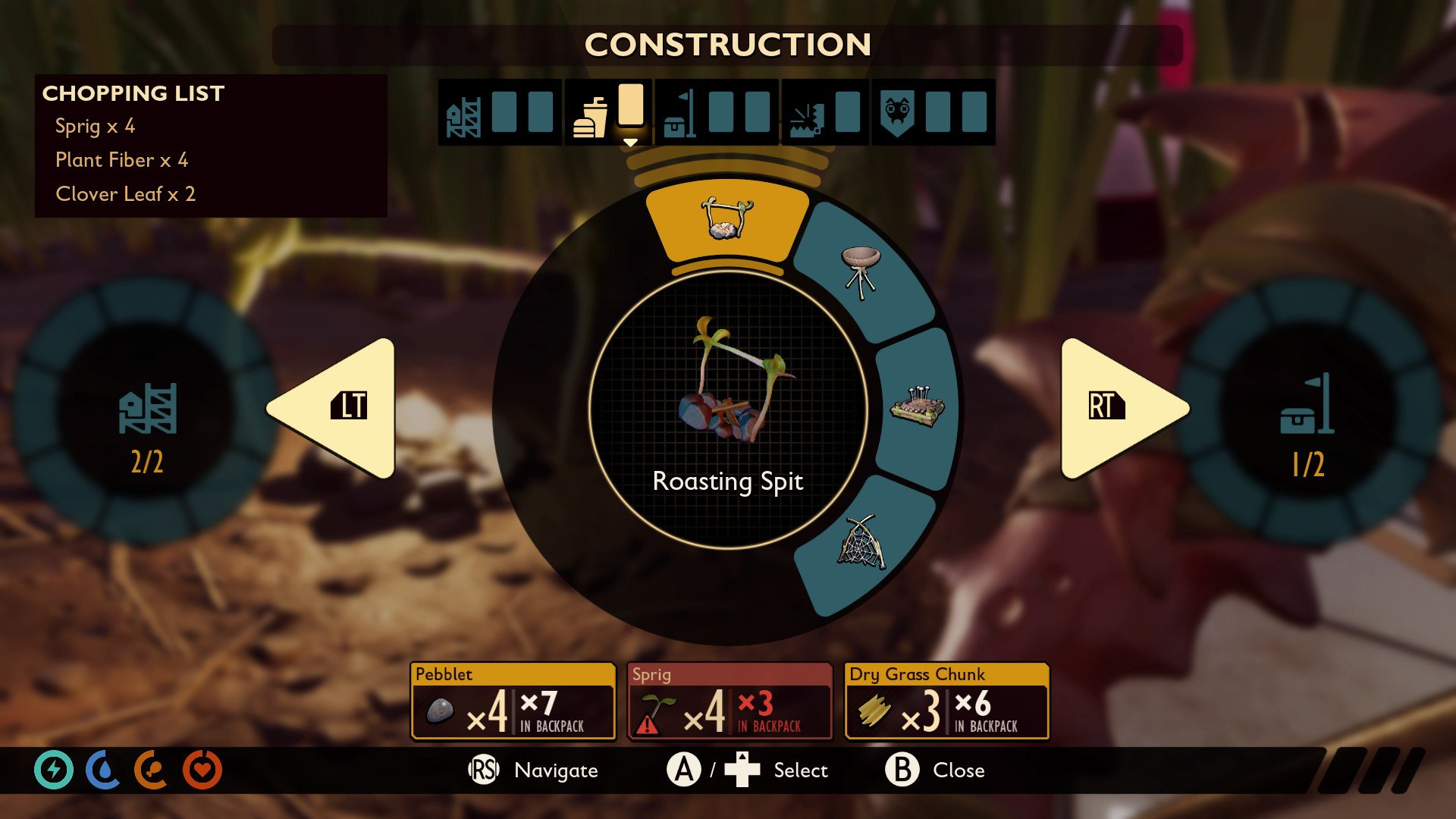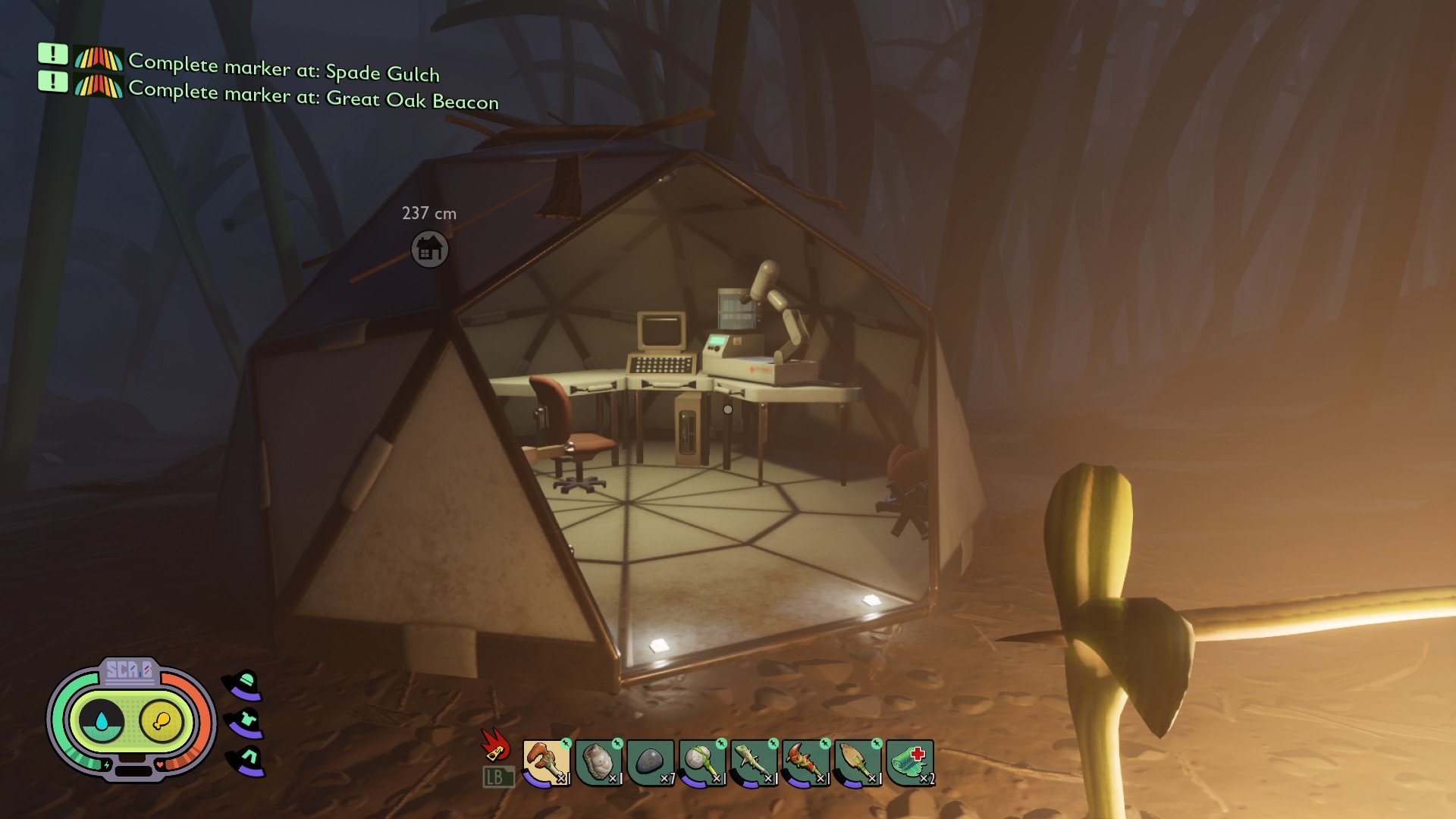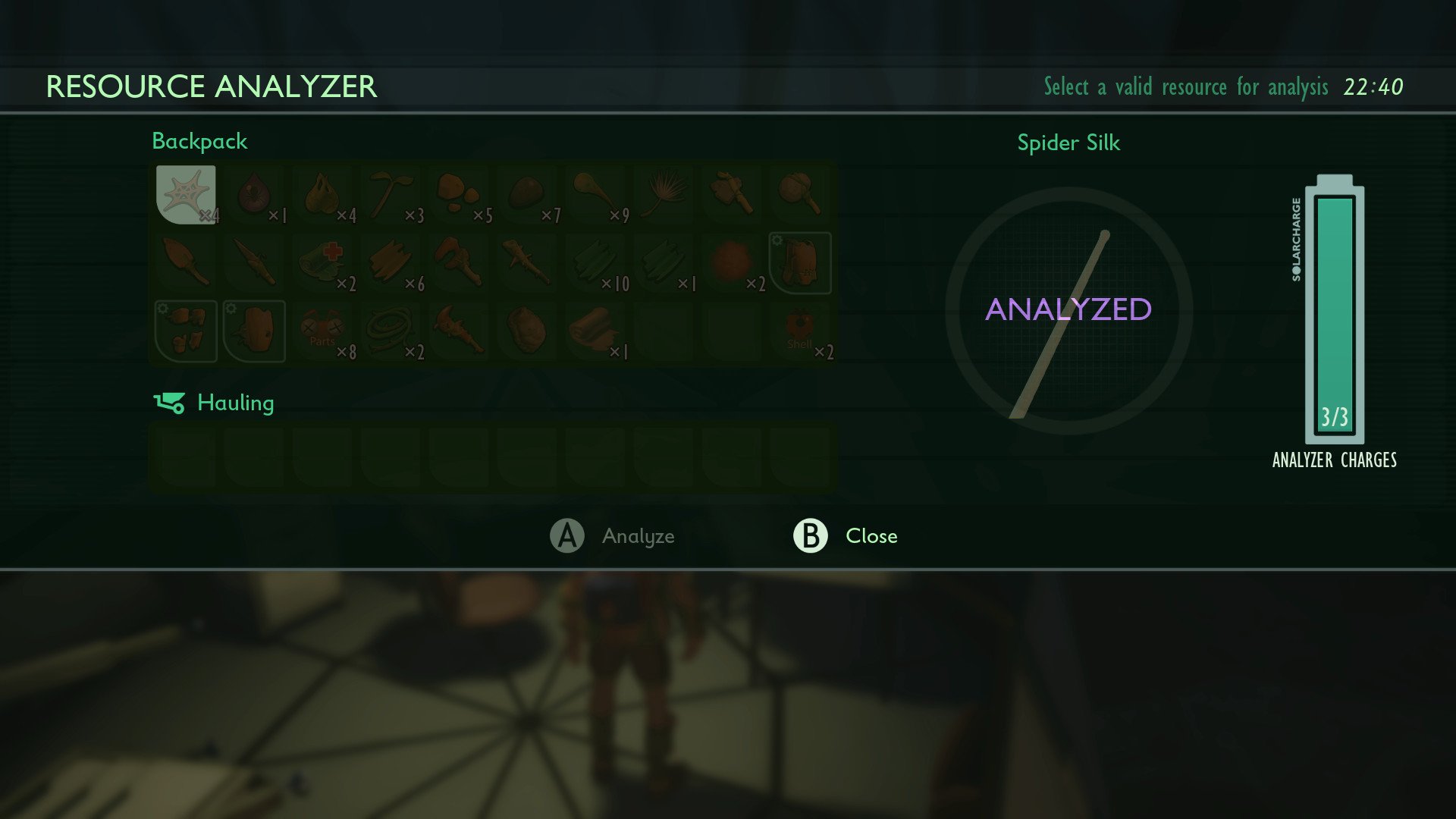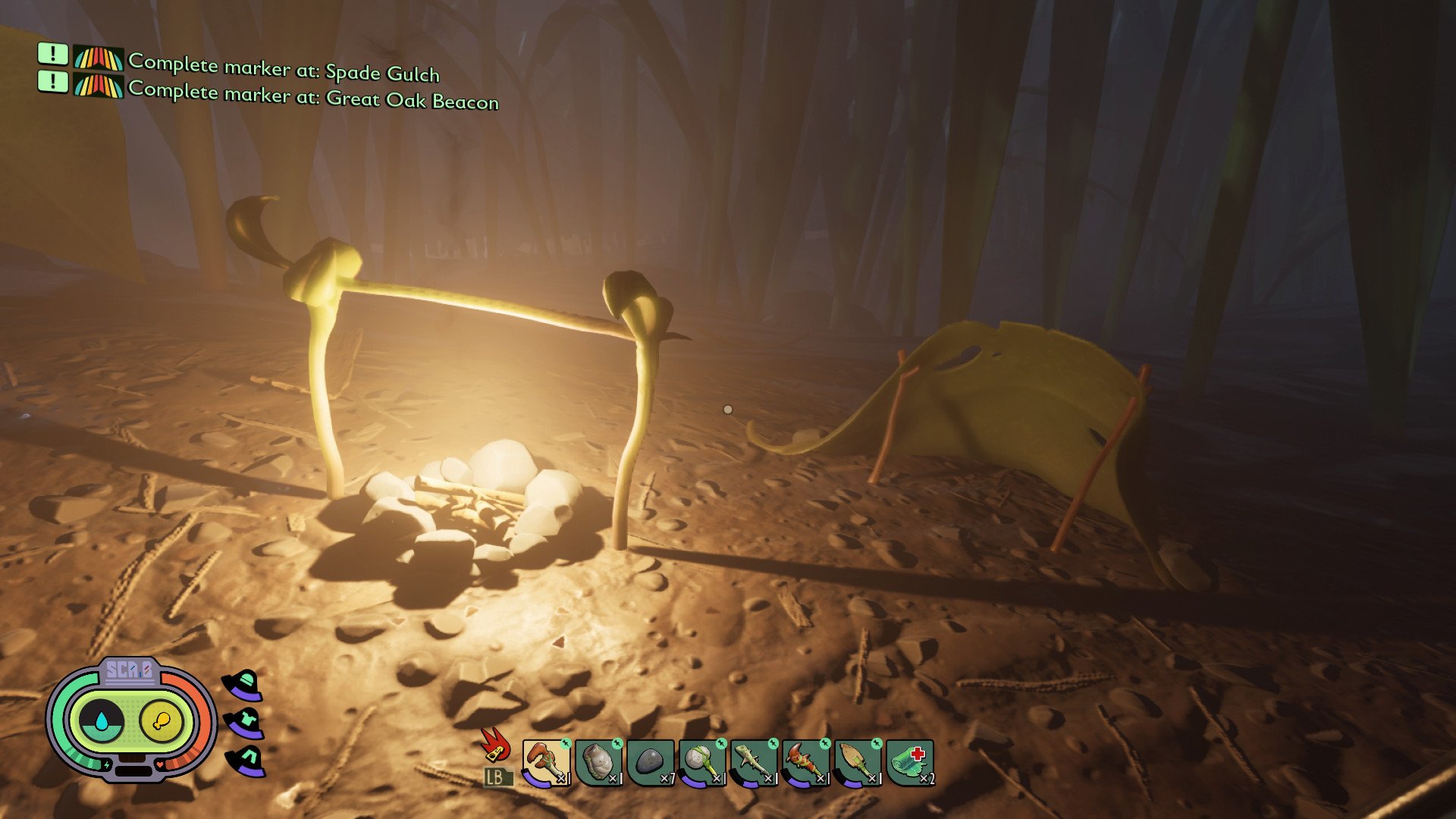'Grounded' beginner's guide: Combat, crafting, and survival tips you need to know
Grounded is out now in early access, and it can be quite tough. Here are some of our best tips to get you started.

Grounded is a sandbox survival sim set in your own back yard. Due to a science experiment gone wrong, you're shrunk down to the size of a small bug, and it's on you to survive a hostile environment full of deadly spiders, poisonous mites, and hungry larvae.
Grounded can be quite tough, however, with an emphasis on survival gameplay and tough battles with angry critters.

It's a big(ger) world out there.
Obsidian Entertainment makes their exclusive debut on Xbox One and PC with Grounded, a unique survival experience that literally makes all of your problems much, much bigger. Join your friends as you're shrunk down to the size of an ant, forced to survive in a dangerous backyard.
Grounded How to find food and drink easily
Food and drink are paramount to survival in Grounded, considering time spent and certain actions deplete your hunger and thirst meters, which can lead to health loss and even death. You should try to keep your character's needs topped off at all times if possible, and also look into carrying supplies for longer excursions away from your main base. Here are some general tips for staying healthy.
- There are two types of water: clean and unclean. Clean water is safe to drink, and unclean water will deplete your hunger meter when consumed.
- You can drink unclean water from dirt pools in a pinch, but make sure you have a supply of food with you to regenerate your food meter afterward.
- The most abundant source of clean water is dew, which can be found glistening on the tops of blades of grass in the morning. Throw a rock at them to dislodge them, then interact with them to slurp them up.
- Additional sources of clean water include juice found near discarded cans or juice boxes, or aphid honeydew, which aphids sometimes leave lying around.
- Analyze grub parts to unlock the recipe for a water skin. This lets you carry two water sources around with you.
- A dew collector is a construction you can place in your base, which generates dew sources every few in-game hours. They require quartzite found in tunnels underground, and spider webbing you can loot from a killed spider-type mob.

- Most smaller mobs in-game drop meat, such as gnats, weevils, and aphids. You can cook these on a cooking fire, and carry them around with you as a source of nutrition. They will, however, go rotten after a day, so you can't keep them for too long.
- You can use rotten food, however, to craft mushroom growing pits, which provides a steady supply of food. They're constructed and researched from acorn top parts, which you can get from acorns near the big tree you might see in the distance.
- In a pinch, you can often find mushrooms all over the place that can give you some sustenance, but meat provides a far bigger bonus.
Grounded Crafting, construction, and base-building
Crafting recipes are the bread and butter of the core gameplay loop, as you ascend to better facilities, better armor, and better weapons. Crafting works similarly as it does to other games in Grounded. Still, there are a couple of critical things that aren't readily obvious unless you're following the story quests and tutorials very strictly.
- Most of your crafting recipes come from analyzing resources. You can do this using one of the resource analyzer stations found throughout the game. The nearest one to the beginning is left after exiting the starter cave.
- Using the analyzer, you can scan practically any new material or item you get, producing crafting ideas out of the other end. Every time you kill a new bug, or loot a new resource, head to an analyzer to learn new recipes.
Source: Windows Central
- Without spoiling, Grounded also has a system for learning more advanced patterns through a quest infrastructure. Complete the main story objectives to uncover more information about this. This is how you get the all-important "floor" pattern for making multi-story buildings. Otherwise, you can use clay foundations as flooring until then. Clay is a red stone substance found near water sources and requires a shovel to recover.
- Many crafting patterns require the use of woven plant fibers (basically string). You'll be using hundreds of them, so be sure to loot every scrap of plant fiber you can find. They're typically recovered from small plant growths on the ground, but sometimes chopping down blades of grass with an ax can produce them as well.
- When selecting an area to build, make sure you don't build your base in a known bug territory. In real life, ants scout locations for several days or weeks to ensure safety before moving in with their nest, you should do the same. If you set up camp in the hunting grounds of a wolf spider, for example, you may find it gets destroyed pretty quickly.
- Consider building your base up high or over water, or on top of another feature to stay safe from bugs. The game is pretty generous with where and how you can build, so be sure to experiment and build nearby relevant resources you want.
- Swarms of larvae seem to hunt down bases that have edible items inside storage containers. Consider either not storing food items, or place them in a separate area high above ground near your main base.
Grounded Combat tips
Combat in Grounded is fairly medieval-style. No guns shrank down with you, meaning you have to craft your own instruments of destruction from materials you find in the field. Here's an overview of how to get started with Grounded combat.
- Grounded combat works on a combination of ranged and melee weapons, with gear that can customize your playstyle to some degree.
- Gear is broken down into levels, with level 1 being the weakest, level 2 being stronger, and so on.
- More powerful enemies are far more challenging to tackle with basic weapons and armor. You should aim to build a spike club first, which is arguably the best weapon you can get without taking on stronger mobs.
- The strongest armor you can craft without killing stronger monsters is the acorn plate gear. Smash acorns with a hammer near the big tree (you can see it in the distance by looking up) to get the materials.
- With a spike club and acorn armor, you can take on stronger monsters like ladybugs and orb weaver spiders. Soldier ants and larvae swarms also drop mandibles that can be used to craft even more powerful weapons, too.
- Melee combat is oriented around blocking and stamina conservation. You can see in the video above how the spider telegraphs its attacks before striking. Well-timed blocks negate almost all damage. However, constantly blocking isn't viable and will lead to your weapons getting damaged, and stamina drain.
- Most enemies don't turn after telegraphing their attack, so you can strafe sideways to avoid being bitten if you don't want to block. Larger enemies with bigger hitboxes make this strategy a bit trickier.
- Hitting enemies in the head repeatedly will stun them, giving you an opener to heal up or do more damage. Weapons with a higher stun rating, naturally, stun more easily.
Grounded General tips
Grounded is a ton of systems to get to grips with, but after a few hours, you'll be a bonafide garden hunter.
All the latest news, reviews, and guides for Windows and Xbox diehards.
- Use markers to set waypoints to help you find your way around. I usually place one at my base, and near any specific resources nearby I want to find. You can craft them from clover parts, which grow near water sources.
- Be sure to follow the first story parts first and foremost, as it will set the context for the game and give you access to the game's questing system.
- If you're trying to find something specific, look to the horizon. Look for dandelion heads if you need weed stems for crafting, for example, and use the big oak tree to orient yourself to the land. If you need to craft arrows, try to find a thistle plant. Finding a high point can help you survey the area.
- Bugs in the game seem to stick to specific territories, but some roam a bit further afield. Try to build your base in a safe place; otherwise, bad things may happen to it (and you).
- Be careful where you put your spawn point to that effect. If you put a spawn point inside a wolf spider's lair, you might find it hard to get out.
- Each bug seems to have a different behavioral pattern. Study their movements and attacks to figure out how best to deal with them.
Grounded and the future
Grounded is in early access right now, but Obsidian has a large roadmap of content planned. It's blatantly obvious to see the raw potential Grounded has, with an infinite range of new insects, crafting opportunities, and locations they could add. Grounded's setting is totally underexplored in the genre, and the way the game seems to be capturing the community's imagination certainly speaks to that.
Do you have any tips for Grounded, or any questions? Hit the comments, and we'll get them included.

It's a big(ger) world out there.
Obsidian Entertainment makes their exclusive debut on Xbox One and PC with Grounded, a unique survival experience that literally makes all of your problems much, much bigger. Join your friends as you're shrunk down to the size of an ant, forced to survive in a dangerous backyard.

Jez Corden is the Executive Editor at Windows Central, focusing primarily on all things Xbox and gaming. Jez is known for breaking exclusive news and analysis as relates to the Microsoft ecosystem while being powered by tea. Follow on Twitter (X) and tune in to the XB2 Podcast, all about, you guessed it, Xbox!






